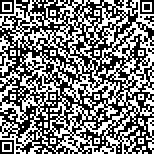荆静,马艳平,刘万林,等.正中神经电刺激治疗脑卒中后认知障碍的康复疗效及机制探讨[J].中华物理医学与康复杂志,2020,42(3):215-220
扫码阅读全文

|
| 正中神经电刺激治疗脑卒中后认知障碍的康复疗效及机制探讨 |
|
| |
| DOI:DOI:10.3760/cma.j.issn.0254-1424.2020.03.006 |
| 中文关键词: 正中神经电刺激 卒中后认知障碍 近红外光谱技术 康复 |
| 英文关键词: Median nerves Electrical stimulation Stroke Cognitive impairment Rehabilitation |
| 基金项目:国家自然科学基金面上项目(81672249,81972154) |
|
| 摘要点击次数: 7345 |
| 全文下载次数: 9187 |
| 中文摘要: |
| 目的 观察正中神经电刺激(MNES)对脑卒中后认知障碍(PSCI)患者认知功能改善的疗效,并探讨其可能机制。 方法 选取30例PSCI患者,按随机数字表法分为对照组(采用常规康复治疗方法)和MNES组(在常规康复治疗的基础上采用MNES治疗),每组15例。2组患者均接受常规康复治疗(包括认知康复训练、药物治疗、针灸治疗等),MNES组在此基础上行右MNES(RMNS)治疗(一只电极置于右侧腕关节掌面腕横纹上2 cm正中神经点,另一只置于右侧大鱼际肌;单个刺激持续时间40 s,间歇时间20 s。),每次治疗时间为30 min,1次/天,每周治疗5 d,共治疗6周。分别于治疗前及治疗3周和治疗6 周后,对MNES组和对照组患者进行简易精神状态量表(MMSE)、蒙特利尔认知评估量表(MoCA)、改良的Barthel指数评定表(MBI)、Fugl-Meyer运动功能评定量表(FMA)评定和比较。另选15例作为近红外组,应用近红外光谱分析(NIRS)技术对接受RMNS刺激前及刺激时该组患者的脑氧变化进行监测观察。 结果 ①治疗3周后,对照组和MNES组患者的MMSE、FMA和MBI评分均较组内治疗前有明显改善(P<0.05),MNES组的MoCA评分亦明显改善(P<0.05)。②治疗6周后,对照组和MNES组患者的MMSE、MoCA、MBI和FMA评分均较组内治疗前显著改善(P<0.05),且MNES组的MMSE和MoCA评分改善亦明显优于对照组(P<0.05);与治疗3周时相比,2组的MMSE、MoCA和FMA评分均明显提高(P<0.05),对照组的MBI评分亦有明显改善(P<0.05)。③治疗6周后,MNES组的MMSE评分在时间定向、地点定向、言语即刻记忆、注意力和计算能力、短程记忆方面较治疗前有明显改善(P<0.05),其MoCA评分在视空间/执行能力、注意力、语言、定向力及记忆方面亦有明显改善(P<0.05)。④NIRS显示,近红外组接受RMNS刺激时的双前额氧合血红蛋白浓度较刺激前明显升高(P<0.05)。 结论 MNES治疗可辅助改善PSCI患者的认知水平;MNES治疗过程中脑双前额氧合血红蛋白浓度升高,该部位神经活动可能发生变化。 |
| 英文摘要: |
| Objective To test the effectiveness of electrical stimulation of the median nerve (MNES) for relieving post-stroke cognitive impairment (PSCI) and explore the possible mechanism. Methods Thirty patients with PSCI were randomly divided into a routine treatment group (the control group) and an MNES group, each of 15. Both groups were given routine rehabilitation treatment, including cognitive rehabilitation training, medications and acupuncture. The MNES group additionally received 30 minutes of MNES on their right hands every day, five times a week for six weeks. One electrode was positioned over the median nerve 2cm up from the rasceta of the right wrist. The other was on the muscles of the thenar eminence. Forty seconds of stimulation were applied with intervals of 20 seconds, for 30 min daily. Before and after 3 and 6 weeks of treatment, both groups were evaluated using the mini-mental state examination (MMSE), the Montreal cognitive assessment (MoCA), the modified Barthel index (MBI) and the Fugl-Meyer assessment (FMA). In another 15 patients oxyhemoglobin levels in the brain before and during the MNES were observed using near-infrared spectroscopy. Results After 3 weeks of treatment, a significant improvement was observed in the average MMSE, FMA and MBI scores of both groups, and the average MoCA score of the observation group. Three weeks later, the average MMSE, FMA, MBI and MoCA scores of both groups had improved significantly compared with before the treatment, with the average MMSE and MoCA improvements in the MNES group significantly greater than the control group′s averages. After 6 weeks of treatment the significant improvements persisted in both groups. Both group′s average FMA scores had also improved significantly, as had the average MBI score of the control group. After 6 weeks of treatment, the observation group′s average time orientation, location orientation, language instant memory, attention, calculation and short-term memory in MMSE had all improved significantly along with visual space capacity, executive capacity, attention, language, orientation and memory in MoCA. The spectroscopic results showed significantly improved oxyhemoglobin concentration in the bilateral frontal lobes after the MNES. Conclusions Electrical stimulation of the median nerve can help to improve cognition after a stroke. It increases oxyhemoglobin concentration in the bilateral frontal lobes. |
|
查看全文
查看/发表评论 下载PDF阅读器 |
| 关闭 |
|
|
|